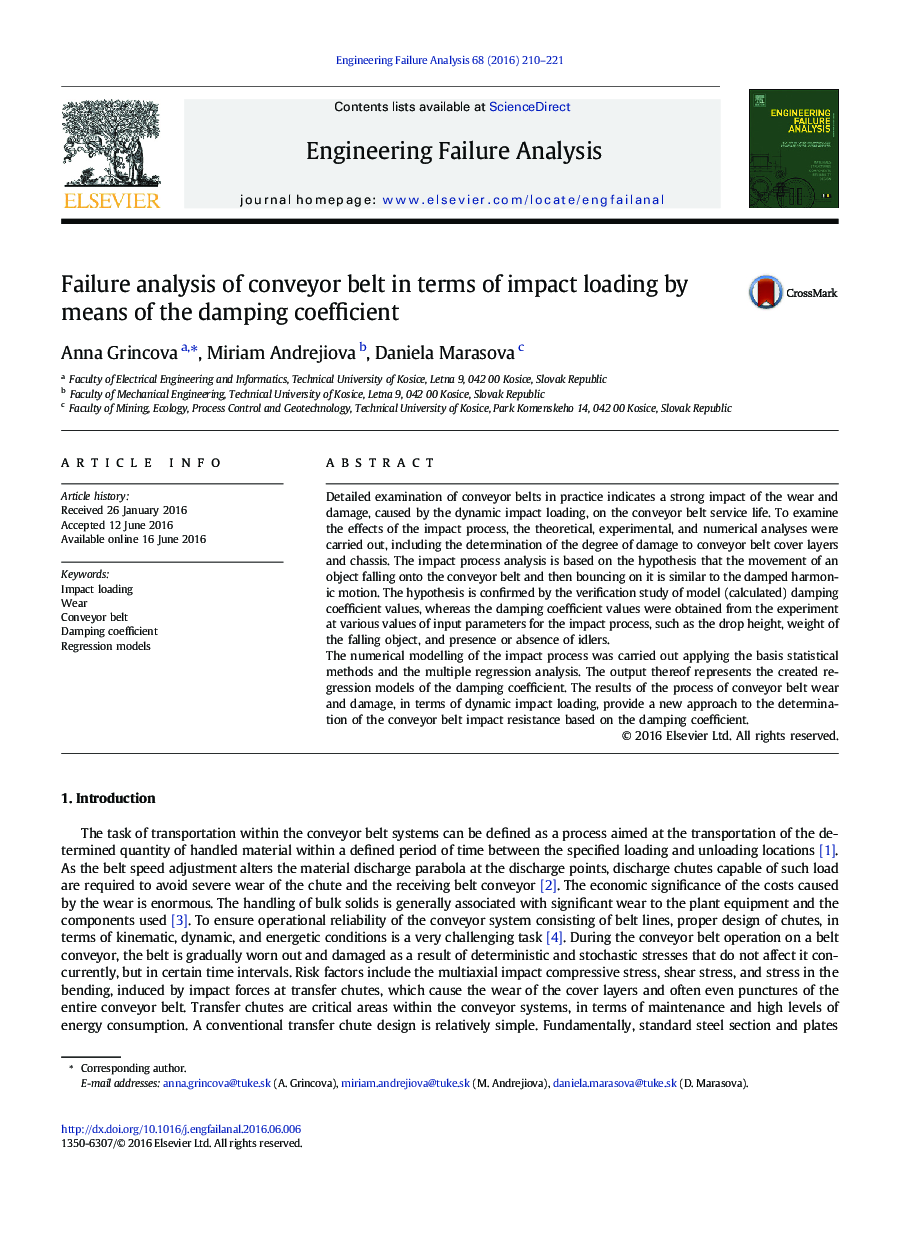| کد مقاله | کد نشریه | سال انتشار | مقاله انگلیسی | نسخه تمام متن |
|---|---|---|---|---|
| 769133 | 1462958 | 2016 | 12 صفحه PDF | دانلود رایگان |
• Experimental measurements of the conveyor belt wear by impact loading
• Analysis of the impact damping by means of the damping coefficient
• Creation of regression models without/with the impact idlers
Detailed examination of conveyor belts in practice indicates a strong impact of the wear and damage, caused by the dynamic impact loading, on the conveyor belt service life. To examine the effects of the impact process, the theoretical, experimental, and numerical analyses were carried out, including the determination of the degree of damage to conveyor belt cover layers and chassis. The impact process analysis is based on the hypothesis that the movement of an object falling onto the conveyor belt and then bouncing on it is similar to the damped harmonic motion. The hypothesis is confirmed by the verification study of model (calculated) damping coefficient values, whereas the damping coefficient values were obtained from the experiment at various values of input parameters for the impact process, such as the drop height, weight of the falling object, and presence or absence of idlers.The numerical modelling of the impact process was carried out applying the basis statistical methods and the multiple regression analysis. The output thereof represents the created regression models of the damping coefficient. The results of the process of conveyor belt wear and damage, in terms of dynamic impact loading, provide a new approach to the determination of the conveyor belt impact resistance based on the damping coefficient.
Journal: Engineering Failure Analysis - Volume 68, October 2016, Pages 210–221
